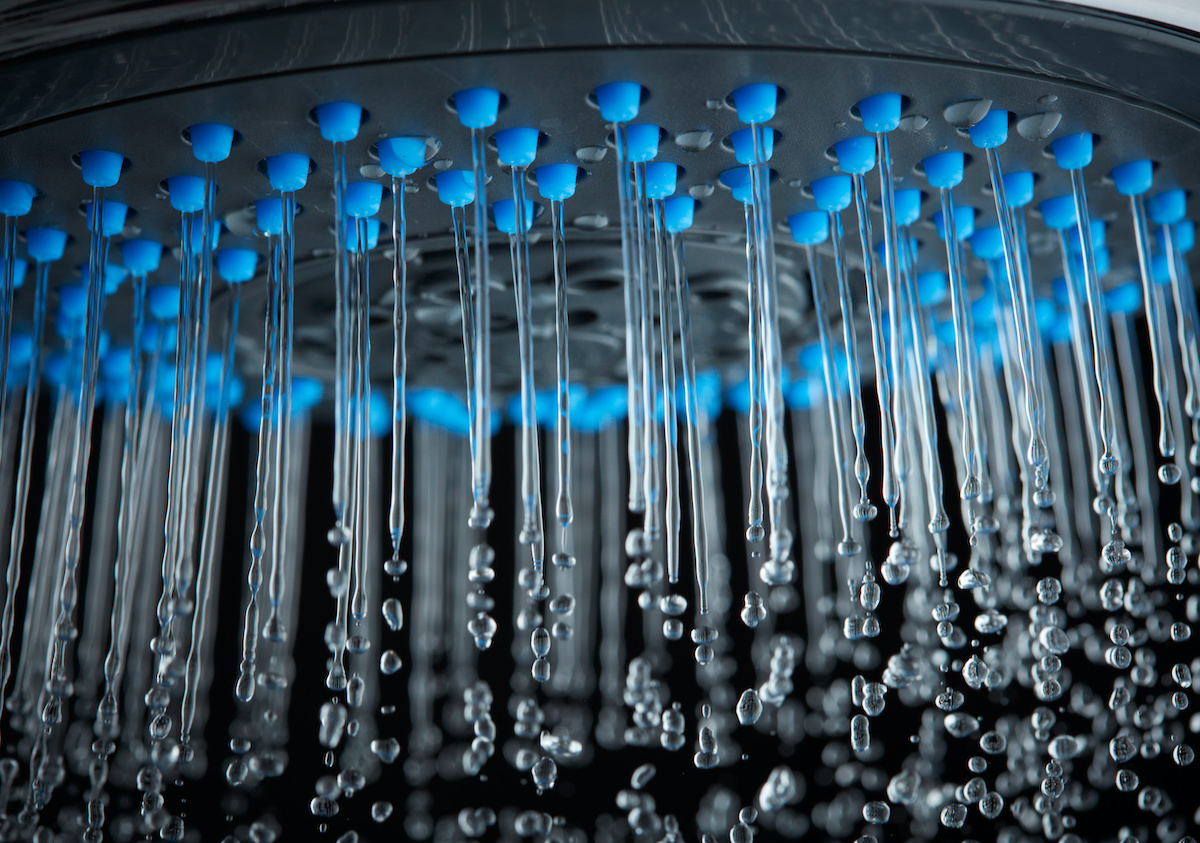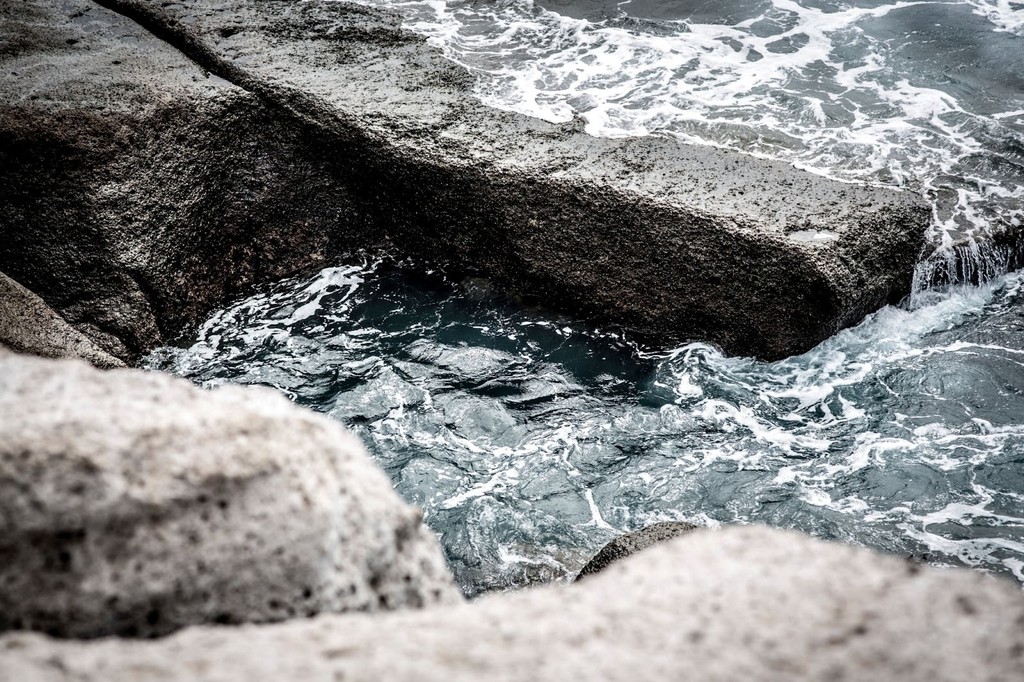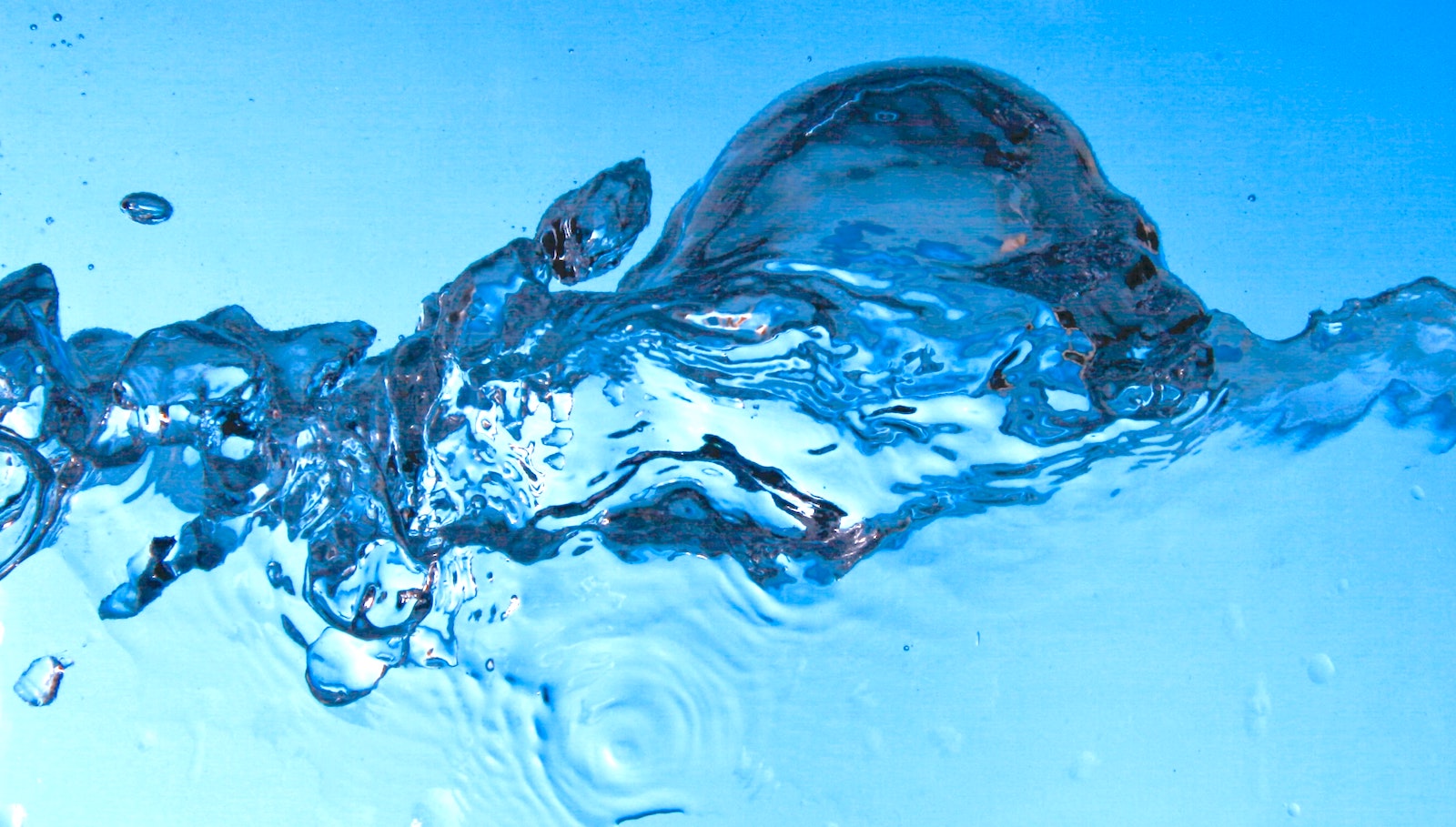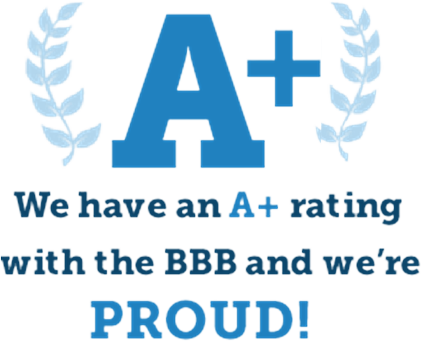We are taking ever necessary precaution with the CDC guidelines and wearing protective gloves, mask, booties, practicing safe distancing and using disinfectant cleaners to keep you and our team safe. If you have any questions or concerns please contact us at 702-737-1957.

Reverse Osmosis and Water Softener FAQ
Free Quotes | Service for All Makes and Models | Locally and Family Owned Since 1978
FAQ
Quick Answers to Important Questions About Water
You use water every day for drinking, cooking, bathing, laundry, and more. It's important to know what you're putting into your body and using around your home. We've assembled a collection of the most important and most common questions we encounter as a water conditioning company in Las Vegas.
01. Hard Water Questions
How can I tell if my water is hard?
You may have hard water if your soaps and laundry detergent don’t lather very well, if glasses and dishes are left with spots, or if colored clothing looks dull. Tubs and bathroom fixtures may be covered with an unsightly film. You can have your water tested by your water dealer or you may use a home water testing kit.
What is considered hard water? How many grains per gallon or whatever?
- Treated (or softened water) = 0
- Slightly hard = 1-2 grains per gallon (total grains x 17.1 equals ppm)
- Medium Hard = 3-7 grains per gallon (total grains x 17.1 equals ppm)
- Hard = 7-10.5 grains per gallon (total grains x 17.1 equals ppm)
- Extremely Hard Water = 10.5+ grains per gallon (total grains x 17.1 equals ppm)
Note: Each ppm of iron equals 4 grains per gallon of hardness.
We hope this page helped you understand how to determine your hardness. If you still have questions regarding hard water, please email us or call us anytime at the number below.
How does a softener remove hardness from water?
As the water passes through a water softening appliance containing a bed of resin, the hardness (calcium and magnesium) present in the water is exchanged or swapped for sodium in the resin. When the available sodium has all been exchanged for calcium and magnesium, hard water is present in the softener outlet and the resin must be regenerated. Common salt is used to replenish the supply of sodium in the resin and the hardness is flushed to waste.
02. Water Softener Questions — General
How often should I clean the water softener brine tank?
It is not necessary to clean out a brine tank, unless the salt product being used is high in water-insoluble matter, or there is a serious malfunction of some sort. If there is a build-up of insoluble matter in the resin, the reservoir should be cleaned out to prevent softener malfunction.
How much salt will I use?
Why do I need a water softener?
Installing a water conditioner/softener on your homes main water supply will increase the life and longevity of everything the treated water comes in contact with. Everything plumbing related in your home from your faucets to your major appliances (water heater, dishwasher, washing machine, etc) will benefit significantly from softened/conditioned water by eliminating unwanted scale build up that can eventually cause them to fail. This also means no more unwanted hard water spotting on your glassware, sinks/countertops, and shower/glass shower doors keeping them looking new for years while saving you time on cleaning. It has also been proven that by using softened water you can decrease the amount of soaps/detergents and cleaning products by as much as 50%! At Servall Water we custom build all of our water treatment systems based on the homes water quality and customer’s needs and wants. Because of this, we have the capability to design a system to remove chlorine, chloramines as well as a broad spectrum of other potentially harmful contaminants found in tap water to keep your family happy and healthy.
Can soft water be used for cooking and coffee-making?
Why is a water softener better for me and my pocketbook?
Money Stretcher
The cost of your cleaning supplies will drop dramatically with conditioned water because you’ll use less soap … fewer harsh chemicals and detergents … to get the job done.
Dish Sparkler
Tired of streaks and spots on glassware and dishes? Conditioned water eliminates the problem, and helps your dishwasher last longer, too!
Hand Soother
Red, roughened hands are usually the by-product of hard water. Conditioned water caresses – doesn’t irritate.
Clothes Brightener
Clothes last longer; come out fresher, cleaner and softer when washed in conditioned water. Colors stay brighter too.
Body Refresher
Bring conditioned water to your bath or shower and you’ll feel a refreshing difference. You’ll wash “really clean” faster and without soap build up on your skin. You’ll come away more relaxed and refreshed.
Face Saver
Say good-bye to razor burn as your razor glides smoothly over your soft water conditioned face. Both your skin and blades will last longer.
Hair Pamperer
A conditioned water shampoo revives hair color and makes it more radiant and manageable.
Faucet Preserver
Hard water scale corrodes and plugs valves in water-using appliances and shortens service life and saves you money.
Hot Water Guard
Conditioned water adds longer life to your water by minimizing the scale build up created by hard water minerals and saves you money! Less energy is required (17% to 21%) to heat water in tanks without a scale build up.
Scrubbing Helper
Washing floors, tile, and woodwork goes much easier and faster with conditioned water, because it eliminates the film and soap scum that hard water causes.
Pipe Protector
Over a period of time scale forms to clog your plumbing. As the pipes clog, water flow is restricted and water pressure can be reduced dramitically. A water conditioning system minimizes this headache.
Stain Eliminator
All bathroom fixtures benefit from conditioned water. There will be no more unsightly rings, stains, or mineral build up to darken your porcelain or your day.
What is the difference between a water softener, a water filter, a descaler, and a conditioner?
A water softener is a water treatment system where the calcium and magnesium carbonate (the minerals responsible for the hard water) which are dissolved in the water are replaced with either sodium chloride (salt) or potassium chloride. This is different from a water filter in that filters will generally remove chlorine, pesticides, bacteria (in some cases), and suspended particles (sand, sediment, etc). A filter will not remove dissolved solids (which are responsible for hard water).
OK then, why wouldn't I want to soften my water?
If you’re using sodium chloride (salt), then the softener will add a small amount of sodium to the water. For most people this is not a problem. However, if you’re on a sodium restricted diet, we would recommend a seperate faucet in the kitchen that dispenses un-softened water for drinking. Some people take awhile to get used to the feel of softened water.
Someone told me that softened water feels “slimy.”
What makes your softener better than others that charge as much as four times the price?
All softeners, regardless of price, should soften your water (i.e reduce the hardness to 0 grains). The question is how long will the unit last? How often does it regenerate? How large is the grain capacity? What is the warranty? How long has the company been in business? Does the softener regenerate based on time rather than how much water has been used? How easy is it to change the settings and service the unit? How quickly can you get your questions answered and your problems solved? You can call Serv-All Water Monday- Friday 9am-5pm at (702) 737-1957
Will a softener remove iron/red stains?
Should I have my water softener professionally installed?
03. Water Softener Questions —Technical
If I am using salt in my water softener, how much sodium is in the soft water?
The amount of sodium in soft water is directly proportional to the hardness of the untreated water, and for most water supplies it is not very high. For each grain per gallon of hardness, multiply by 7.9 to convert to milligrams of sodium per liter (a liter is slightly more than a quart). For instance, water with 15 grains/gallon hardness will contain118 milligrams of sodium per liter after softening. Thus, 2 liters of water per day provides less than 250 milligrams, which is small compared to the normal daily intake. If you have any health concerns about consuming or cooking with salt-softened water, please consult your physician.
What is the difference between the water softeners you sell over the ones offered by the competition?
We include the important options on our systems that add up in price, such as a commercial grade bypass on our Clack, Fleck and Autotrol Systems. Stainless steel bypass valve on our Clack WS1, Fleck 5600, 5600SE, 2510, 2510SE and 9000 Systems . We also include a brine well inside the brine / salt tank to keep the dirt and sediment from the salt plugging up the air check tube and the Softener valve, safety float to keep the water level from getting to high and overflowing all over the floor if there is a problem with the system and a grid plate/ salt platform to help keep the salt from hardening up and solidifying.
Do magnetic water softeners work?
What about flow rates — should I worry about water flow through these water softeners?
Always think about flow rates. Think about the number of shower heads and baths you have and the chances of using them all at the same time. For most folks, it is rare that all appliances and showers etc. will be used all at once so for the average home less than 2300 square feet a flow rate of 8 gallons per minute is more than enough. Every once in awhile we run across a customer that has multiple body shower sprays in a shower stall. The average jet package has 4 to 5 sprayers including the shower head. You need about 15 GPM to operate properly. In this case you want to size your softener based on an 18 gpm flow rate. In this application the Clack WS1 48,000 grain softener is the best choice.
Are your systems metered, on-demand, water flow only or do they regenerate by days only?
The preferred systems are all metered on demand, water flow systems they regenerate based on gallons used only so if you have more or less people in the home they will keep up with the usage if you go on vacation they will not regenerate do to no water is being used. We also carry Timered systems that regenerate base on days which are great for well water when trying to remove more than 3 ppm or mg/L of iron, this helps keep the resin bed clean from the iron. The only other benefit is cost.
Can I use potassium chloride instead of rock salt with your water softeners?
How long does it take before delivery after I have placed my order?
How do you handle warranty issues and what is the warranty on your water softeners and iron filters?
If you have a problem with your equipment you can do two things. Call us and will walk you through the troubleshooting which is easy to do. If that does not work we will send a technician out to try to fix the problem. If it is before one year of installation date, then there is no trip charge. But after one year there will be a charge. If it is a defective part that is under warranty we will change it out on site and take the broken part back to ship to the manufacture. The customer has to do nothing when it comes to the manufacture. We will handle it all! The control valves have a five year warranty and the tanks have a ten year warranty.
What is the difference between the Purolite c-100 e high capacity resin that you generally use and an ionics c-249 resin?
What is a main water supply?
Most homes have a similar water main somewhere on the outside of the house. You can see the water comes out of the ground, goes to to a shut off valve of some sort and a hose bib for connecting a hose. The water then enters the house and is distributed to all the plumbing fixtures. We need to tie into this main to install the water softener if your house was not pre-plumbed with a loop when it was built. You can also see the vacuum breaker that supplies all the underground sprinklers for irrigation.
If you can describe the location of the water main when you call we can ask you a few questions and give you a accurate quote for what we refer to as a full line installation.
How much water does it take to dissolve eight pounds of salt?
Do I have to have an exact amount of salt in the brine tank for the softener to regenerate properly?
The amount of salt placed into the brine storage tank has nothing to do with the amount of salt used during the regeneration cycle. Water will disolve and absorb salt only until it becomes saturated. A given amount of brine (salt saturated water) contains a specific amount of salt. Just make sure that there is at least enough salt for a regeneration cycle (8 lbs in the case of our unit).
04. Water Softener Myths
Companies who are selling competing products have perpetuated a number of myths about water softeners in an attempt to make their products look more attractive. The truth is that a water softener is the most reliable and cost-effective way of eliminating hardness in tap water, which causes so many problems throughout the home.
Do water softeners put salt in your water?
NO. Salt is sodium chloride, and water softeners add just a small amount of sodium to your water… but there is already sodium in the water before it even reaches the water softener.
This is a hugely misunderstood subject in the water business. People think water softeners also add chloride to the water, which is not true. All the chloride from the salt used in a water softener goes down the drain and none is added to the water supplied to your home. If water softeners added chloride to the water, the water would taste like ocean water, but it does not.
Reasonable levels of sodium are not bad for most people — in fact, Gatorade has a large amount of sodium in it. People on a restricted-sodium diet should not drink tap water either before or after a water softener because they will both contain sodium. When on a sodium restricted diet, only drink water processed through reverse osmosis or bottled water which has no sodium.
Is soft water bad for a swimming pool?
Yes and no. A plaster swimming pool needs a small amount of calcium in it so the water remains balanced. Because soft water has no calcium in it, the water is out of balance and could attack the plaster, trying to get back into balance.
It is almost impossible to fill a swimming pool with soft water because you would have to stop filling the pool every couple of hours while the water softener regenerates. Because calcium is a solid and not a liquid, it does not evaporate like the water does. Once the calcium is in the pool, it will always be there until you drain the pool.
For this reason, it is very beneficial to add soft water to a pool to replenish the water that is lost to evaporation. It will keep the calcium at a reasonable level and make your tiles easier to clean. If you continue to add hard water to the pool to replenish for evaporation, the calcium continues to build because it does not evaporate. Eventually, you will have to drain your water and refill the pool because it has too much calcium in it.
05. Reverse Osmosis Questions
Is reverse osmosis-treated low-mineral water healthy and safe to drink?
Reverse osmosis water filters remove 90-99% of all contaminants from water, including inorganic minerals. In water filter comparison tests, reverse osmosis systems always beat standard carbon filters in the removal of harmful contaminants in both tap and well water.
However, some critics say that this water is unnatural and is not good for human consumption. Is ultra-clean water that is free of inorganic minerals good for human health? Keep reading this FAQ to find out.
Reverse osmosis is a revolutionary water treatment technology that was first developed in the late 1950′s as a method of desalinating seawater. Also known as hyperfiltration, reverse osmosis is the process by which water molecules are forced through a 0.0001-micron semi-permeable membrane through the use of water pressure. This membrane allows only microscopic water molecules to pass through, filtering out almost everything else including 90-99% of all contaminants in the water.
Today this technology has earned its rightful status as the most convenient and thorough method to produce contaminant-free clean water. It is used by many water and soda bottling plants and by many industries that require ultra-refined water in manufacturing.
Reverse osmosis has also made its way into the residential sector and has become a popular under-the-counter water filtration system for many families.
However, there are some competitors in the water filtration market that argue against the use of reverse osmosis for drinking water and have spread many outrageous rumors against it online in the hopes of discrediting the technology. This FAQ will cover some of the issues and claims brought up against reverse osmosis technology by those critics.
Is reverse osmosis-purified water unhealthy to drink?
Reverse osmosis water is very clean and healthy to drink.
Reverse osmosis (RO) has been called unnatural water because of its purity. Detractors claim it is man-made and unhealthy and should only be used for industrial applications and not for human consumption. They say that RO water is too pure and clean to be good because such perfectly clean mineral-free water does not exist naturally on earth.
However, this type of water does exist — it’s called RAIN.
Rainwater is water that has been stripped of all minerals and is often one of the purest and cleanest waters on Earth. People have been drinking rainwater for thousands of years without any negative health effects.
Only recently has rainwater been polluted by the industrial age and man’s pollution of the skies. In the absence of heavy natural or man-made air pollution, rainwater can be very pure and safe to drink. While rainwater may absorb and pick-up some substances as it falls through the atmosphere, minerals are not one of them.
Thus, people have been drinking mineral-free water for thousands of years, which is very normal when you consider that nothing is more natural than mother nature’s life-giving rain.
With the scientific research that has been done over the past 60 years on reverse osmosis water, none has ever documented any negative health effects from people drinking RO water. In fact, RO technology has also been extensively tested in the past by the US military and is approved for and highly used throughout the military as drinking water by the men and women in our armed forces.
Does a reverse osmosis filter remove healthy minerals from water?
Reverse osmosis filters remove inorganic, unhealthy minerals from water.
Reverse osmosis systems do remove minerals from tap water. However, we humans get the vast majority of our minerals from the foods we eat, not from drinking water. For example, one glass of orange juice has the same amount of minerals as 30 gallons of tap water. You would also get more minerals from one vitamin tablet than you will from drinking a month’s supply of tap water.
Tap water contains only inorganic minerals which cannot be properly absorbed by our bodies. Human beings need organic minerals which are only available from living organisms like plants and vegetables and are easily absorbed by our systems.
According to the WQA and WHO (Water Quality Association and World Health Organization), we get the vast majority of our minerals from food not from drinking water. The inorganic minerals found in water have little to no benefits to people and in fact can be very bad to our health.
It is estimated that over a 70-year lifespan, a person drinking tap or mineral water will be ingesting about 200 to 300 pounds of rock that their body cannot use. While most of these microscopic rock minerals will be eliminated from our bodies regularly, some will be stored in our tissues, becoming toxic.
The primary culprits are calcium salts and over time they can cause gallstones, kidney stones, bone and joint calcification, arthritis, and hardening and blocking our arteries. The presence of other hard metal minerals (some are radioactive!) is suspected to cause other degenerative diseases as well, including eye glaucoma, cataracts, hearing loss, emphysema, diabetes, obesity, and cancer.
These minerals available, especially in hard tap water, are poorly absorbed, or rejected by cellular tissue sites, and, if not evacuated, their presence may cause arterial obstruction and internal damage. (Dennison 1993, Muehling 1994, Banik 1989)
Reverse osmosis water purification simply delivers the cleanest, purest drinking water on the market.
What about distilled water, you say? Distillation systems are comparable in contaminant removal; however, since many synthetic chemicals such as herbicides, pesticides, and chlorine solutions have boiling points lower than water, these chemicals will vaporize and can be carried over into the product water container actually making the collected purified water even more concentrated in those particular chemicals. Distilled water systems also require very high energy costs to operate and are very slow in producing water.
Reverse osmosis is also the only purification system that can remove the majority of dangerous pharmaceuticals and drugs from our drinking water. (According to AP news reports provided by the USA Today article & Fox News report, “Reverse Osmosis removes virtually all pharmaceutical contaminants”)
Reverse osmosis removes many contaminants that countertop and faucet carbon filters cannot, including viruses, bacteria, pesticides, arsenic, fluoride, drugs, cryptosporidium, mercury, nitrates, microbes, heavy metals, all radioactive materials, and many more.
The lack of minerals in your water should not keep you up at night. (Just take a vitamin.) The increasing amounts of chemicals, drugs, and carcinogenic/radioactive minerals potentially found in tap water should!
Does reverse osmosis leach minerals from the body?
Reverse osmosis water cannot leach minerals from the human body.
Water is called the universal solvent as it always “wants” to have substances dissolved in it. The purer the water, the more aggressive it becomes in attacking things that can dissolve. This doesn’t hurt the human body, because our physiology quickly obtains homeostasis using saliva, stomach fluids, etc. to equilibrate all bodily fluids.
Reverse osmosis technology was created in the 1950s and has been scientifically tested in every conceivable way since then. There has never been any documented evidence to prove that reverse osmosis treated water can leach minerals from the human body.
The US Navy has used water with less than 3 parts per million total dissolved solids (TDS) for more than 40 years, according to a 1993 Water Quality Association (WQA) report, which also said the Army’s field personnel drinks RO water.
In early July 2008, the Brighton Standard Blade, a Colorado newspaper, contacted the EPA at their readers' request to find out if RO water leaches minerals. The EPA spokeswoman said that their organization does not support this idea.
The WQA also rejects the idea that RO water can leach minerals in a 1993 report titled ”Consumption of Low TDS Water.” Their extensive research presented evidence that suggests water with low amounts of total dissolved solids (TDS), such as distilled water and reverse osmosis-treated water has no ill effects on humans.
Water Technology Magazine also disagrees with this myth and gives a list of sources that dispels the false water propaganda.
Reverse osmosis water is very clean, and its purity will actually help improve the absorption of all nutrients including good organic minerals. No more ingesting of bad inorganic minerals (rocks) means the body will no longer be stressed and taxed with trying to absorb something that wasn’t supposed to be there in the first place.
Drinking water heavy in inorganic minerals is like putting random rocks from your back yard into your chicken soup. Considering the fact that some inorganic minerals are radioactive and others are toxic, you are figuratively playing Russian roulette with your health!
Use common sense. Drink the cleanest and purest water you can find!
Does reverse osmosis filtration produce very acidic water with low pH?
Reverse osmosis has little effect on water pH values.
Reverse osmosis purification may or may not reduce pH levels as it removes unhealthy inorganic minerals from tap water. Water pH is very complicated and pH levels vary constantly depending on a host of factors that can only be measured by water chemists and PhDs.
The truth is, water pH levels will automatically change when it is ingested and comes into contact with the food in your stomach. Even on an empty stomach, your stomach acid alone is already several times more acidic than RO water (pH 6-8) with a pH level of 2.
I thought my city's tap water was safe to drink?
It is a known fact that many municipal water distribution channels across American cities are in desperate need of replacement from old age and wear. Water contamination can occur at almost any point in the delivery channel including lead leaching from corroded pipe solder, bacteria entering the system from water main breaks, or gardening chemicals back-siphoned from a careless neighbor.
Unfortunately, most local and state governments do not have the financial resources to address these very expensive problems now or in the foreseeable future. To make matters worse, most cities also add chemicals like chlorine and fluoride to their water.
The truth is, tap water quality in the US will most likely continue to decline in the coming years. The best way to protect your family from the increasingly wide range of contaminants found in today’s tap water is by installing a reverse osmosis drinking water system.
How is RO water compared to bottled water?
Just as good or even better. We use the same technology, reverse osmosis (RO), as other major bottling plants use to filter water. Our drinking water has a refreshing taste with a touch of minerals –not like the flat taste of distilled or bottled water.
The five-stage system is the most stable and complete RO process. The best part is that our system allows you to proactively monitor and maintain the unit’s performance and measure the purity of the water to ensure your family’s health yourself. That is something that you cannot do with bottled water.
How effective is reverse osmosis filtration compared to other methods?
Reverse Osmosis is the most convenient and effective method of water filtration. It filters water by squeezing water through a semi-permeable membrane, which is rated at 0.0001 microns (equals to 0.00000004 inches!). This is the technology used to make bottled water. It is also the only technology capable of desalinating seawater and making it into drinking water.
When should I change my filters on my reverse osmosis system?
What if I don't use my reverse osmosis all the time? Do I still need to change the filters every year?
Yes!! The reason why is the water still sits on the filters. Another reason is that if your ice maker is hooked up to the reverse osmosis system, it is constantly sending water to your ice maker.
The whole reason behind a filter change is to protect the membrane filter. That is the filter that you change out every three to five years. That is the heart and soul of the whole system. If that goes bad, your water will taste bad and will cost you more money down the road. Also, if the filters clog up, that could cause damage and break the system. The better choice from us and the manufactures is to change your filter every year.
Testimonials
What our clients say about us and our work
Mike Remeika
We now understand why Serv-All is rated 5 stars. We had the pleasure of their technician Kris come to our home today to figure out why our water softener wasn't making soft water. We ended up replacing the water softener/ conditioner and getting a reverse osmosis system installed. Very happy with his attention to detail. We are very happy customers.
Timothy Evans
Highly recommend this company. Water softener and 5 stage ro are worth the price.
Ira Kleiman
Nick is thorough, patient and knowledgeable. Came for a follow up for a new water softener at no cost and answered all my questions.











